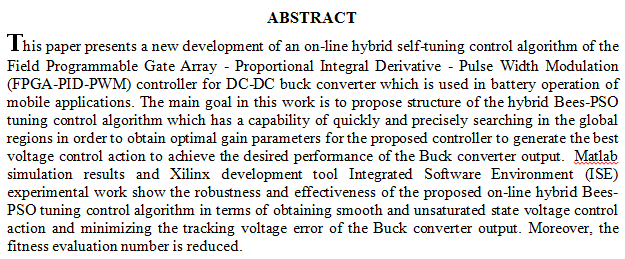
Spectrophotometric method was developed for the determination of copper(II) ion. Synthesized (2,2[O-Tolidine-4,4-bis azo]bis[4,5-diphenyl imidazole]) (MBBAI) was used as chromogenic reagent at pH=5. Various factors affecting complex formation, such as, pH effect, reagent concentration, time effect and temperature effect, have been considered and studied. Under optimum conditions concentration ranged from (5.00-80.00) µg/mL of copper(II) obeyed Beer`s Low. Maximum absorption of the complex was 409nm with molar absorpitivity 0.127x104 L mol-1 cm-1. Limit of detection(LOD) and Limit of quantification were 1.924 and 6.42 μg/mL, respectively.
... Show More (7)
(7)
 (3)
(3)
 (4)
(4)
 (5)
(5)
In this article, the casting method was used to prepare poly(methyl methacrylate)/hydroxyapatite (PMMA/HA) nanocomposite films incorporated with different contents (0.5, 1, and 1.5 wt%) of graphene nanoplatelets (Gnp). The chemical properties and surface morphology of the PMMA/HA blend and PMMA/HA/Gnp nanocomposite were characterized using FTIR, and SEM analysis. Besides, the thermal conductivity, dielectric and electrical properties at (1–107 Hz) of the PMMA/HA blend and PMMA/HA/Gnp composites were investigated. The structural analysis showed that the synthesized composites had a low agglomerated state, with multiple wrinkles of graphene flakes in the PMMA/HA blend. The thermal conductivity was improved by more than 35-fold its value for
... Show More (21)
(21)
 (18)
(18)
Phosphorus‐based Schiff base were synthesized by treating bis{3‐[2‐(4‐amino‐1.5‐dimethyl‐2‐phenyl‐pyrazol‐3‐ylideneamino)ethyl]‐indol‐1‐ylmethyl}‐phosphinic acid with paraformaldehyde and characterized as a novel antioxidant. Its corresponding complexes [(VO)2L(SO4)2], [Ni2LCl4], [Co2LCl4], [Cu2LCl4], [Zn2LCl4], [Cd2LCl4], [Hg2LCl4], [Pd2LCl4], and [PtL
... Show More (35)
(35)
 (21)
(21)
The present study is to investigate the possibility of using wastes in the form of scrap iron (ZVI) and/ or aluminum ZVAI for the detention and immobilization of the chromium ions in simulated wastewater. Different batch equilibrium parameters such as contact time (0-250) min, sorbent dose (2-8 g ZVI/100 mL and 0.2-1 g ZVAI/100 mL), initial pH (3-6), initial pollutant concentration of 50 mg/L, and speed of agitation (0-250) rpm were investigated. Maximum contaminant removal efficiency corresponding to (96 %) at 250 min contact time, 1g ZVAI/ 6g ZVI sorbent mass ratio, pH 5.5, pollutant concentration of 50 mg/L initially, and 250 rpm agitation speed were obtained.
The best isotherm model for the batch single Cr(III) uptake by ZVI
... Show More (12)
(12)
 (15)
(15)
 (6)
(6)
In this paper the process of metal ions extraction (Zn(II) and Cu(II)) was studied in PEG-KCl aqueous two phase system was investigated without using an extracting agent. The experimental runs were performance at constant temperature (25 oC), constant mixing time (30 min), and constant PH of the solution (about 3). The effect of KCl salt concentration (from 10% to 25%), volumetric phase ratio of PEG solution to KCl solution (from 0.5 to 2), and the initial metal ion concentration (from 0.25 ml to 2 ml of 1 gm/L solution) were investigated on the percent extraction of Zn(II) and Cu(II). The results indicated that the percent extraction of metal ions increase with increasing of salt concentration and phase ratio, and slightly de
... Show More (11)
(11)
 (10)
(10)
